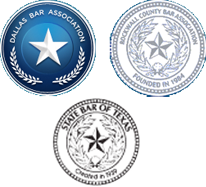Bankruptcy stops your vehicle from being repossessed, and then gives you many tools — under both Chapter 7 and Chapter 13 — to either keep or surrender the vehicle.
Stopping the Repossession
The moment any kind of bankruptcy case is filed on your behalf, the “automatic stay” instantaneously stops a vehicle repossession. The automatic stay is an injunction against repossession and any other collection efforts. This injunction goes into effect as a matter of federal law upon the filing, without the delay of getting a court order and without the vehicle lender having any say about its imposition.
As a practical matter the vehicle lender — as well as perhaps its attorney, and in some cases even its repossession agent — should be informed right away about your bankruptcy filing so that they are aware of it and do not repossess your vehicle.
Violating the Automatic Stay
But even if your vehicle IS still repossessed after and in spite of your bankruptcy filing because the lender had genuinely not yet gotten notice of your filing, the lender must return your vehicle to you immediately. Otherwise it risks significant penalties for violating the automatic stay.
If the lender repossesses your vehicle while knowing about your bankruptcy filing, the lender will likely be penalized for violating the law, unless that lender filed a motion with the bankruptcy court beforehand and received permission to repossess the vehicle.
Keeping Your Vehicle after Stopping the Repossession
If you want to keep your vehicle, whether Chapter 7 or Chapter 13 bankruptcy is the better tool depends mostly on two questions:
- Are you current on your payments or can you get current within about 30 to 60 days after filing for bankruptcy?
- Did you buy and finance your vehicle more than 910 days (about two and half years) ago and is it worth less than what you owe?
Using Chapter 7 to Keep Your Vehicle
If you are current on your vehicle or can get current quickly, you can continue making your regular payments and keep the vehicle in a Chapter 7 “straight bankruptcy.”
If you are further behind — so that you won’t be able to bring your account current within a month or two after filing — most likely you will not be able to keep your vehicle through Chapter 7. Talk with your attorney — with certain creditors, usually unconventional, non-national ones, there may be more flexibility, such as allowing missed payments to be put to the end of the contract.
Using Chapter 13 to Keep Your Vehicle
If you are not able to catch up on your late vehicle payments within about two months, a Chapter 13 “adjustment of debts” will give you much more time to do so, up to several years.
Even if you are current or close to current on your payments, but your vehicle is worth less than your debt on it AND your loan is more than 910 days old, Chapter 13 gives you the often extremely helpful “cramdown” option. In effect you can rewrite your contract to 1) pay the secured part of the debt — the portion of the balance up to the value of the vehicle — usually at a reduced interest rate and often with radically reduced monthly payments, and 2) only pay the remaining unsecured balance to the extent you have money to do so. This unsecured amount is lumped in with all the rest of your general unsecured debts — credit card debts, medical bills and such — and you can often pay very little of it or nothing at all, depending on your budget.
If you are behind on your payments, and your vehicle is worth less than your debt on it AND your loan is more than 910 days old, you don’t have to catch up on the late payments. This advantage is in addition to usually paying less each month, a lower interest rate and less overall. You just start paying the lower monthly “cramdown” payment going forward after your Chapter 13 case is filed.
Surrendering Your Vehicle
If you don’t need your vehicle, or simply can’t afford it even with the help that Chapter 7 or 13 would provide, surrendering it while you’re in a bankruptcy case is usually much better than surrendering it without bankruptcy. That’s because usually after a surrender (or repossession) you continue to owe a “deficiency balance.” That’s the debt remaining after the lender sells the vehicle (usually at an auto auction) and credits the proceeds to the account. A Chapter 7 case virtually always discharges (legally writes off) that deficiency balance. A Chapter 13 case would do so as well, usually without increasing what you need to pay into your plan.
Conclusion
Let me show you how Chapter 7 and Chapter 13 bankruptcy can help you solve your financial problems, with your vehicle loan(s) and with everything else. If you are in the Rockwall, Heath, Greenville, Lavon, Wylie, Mesquite, Royse City, Sachse or Rowlett, Texas, contact the Law Office of Carrie Weir. The initial consultation is free. Please call 972-772-3083 or use this form .








Speak Your Mind